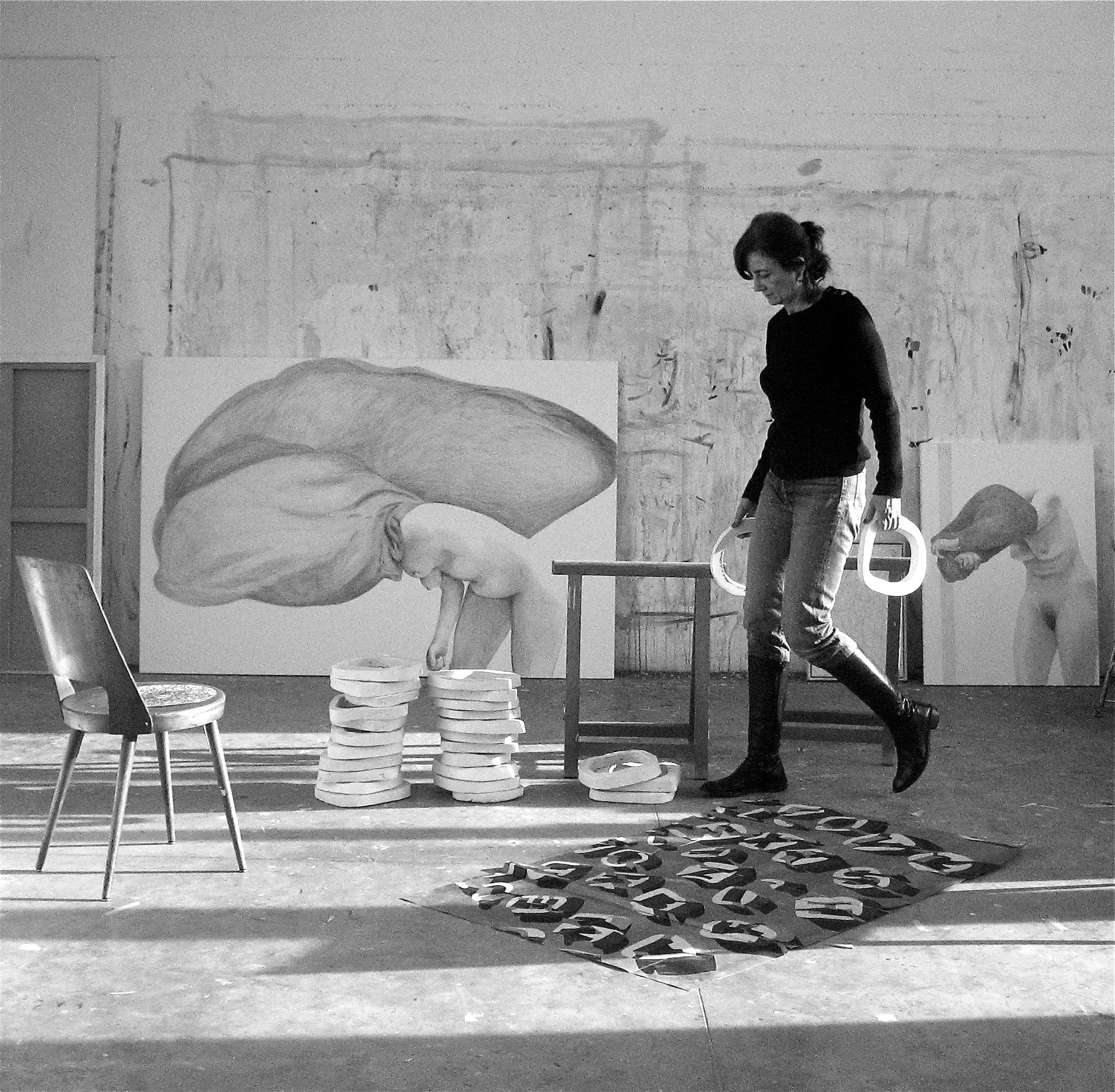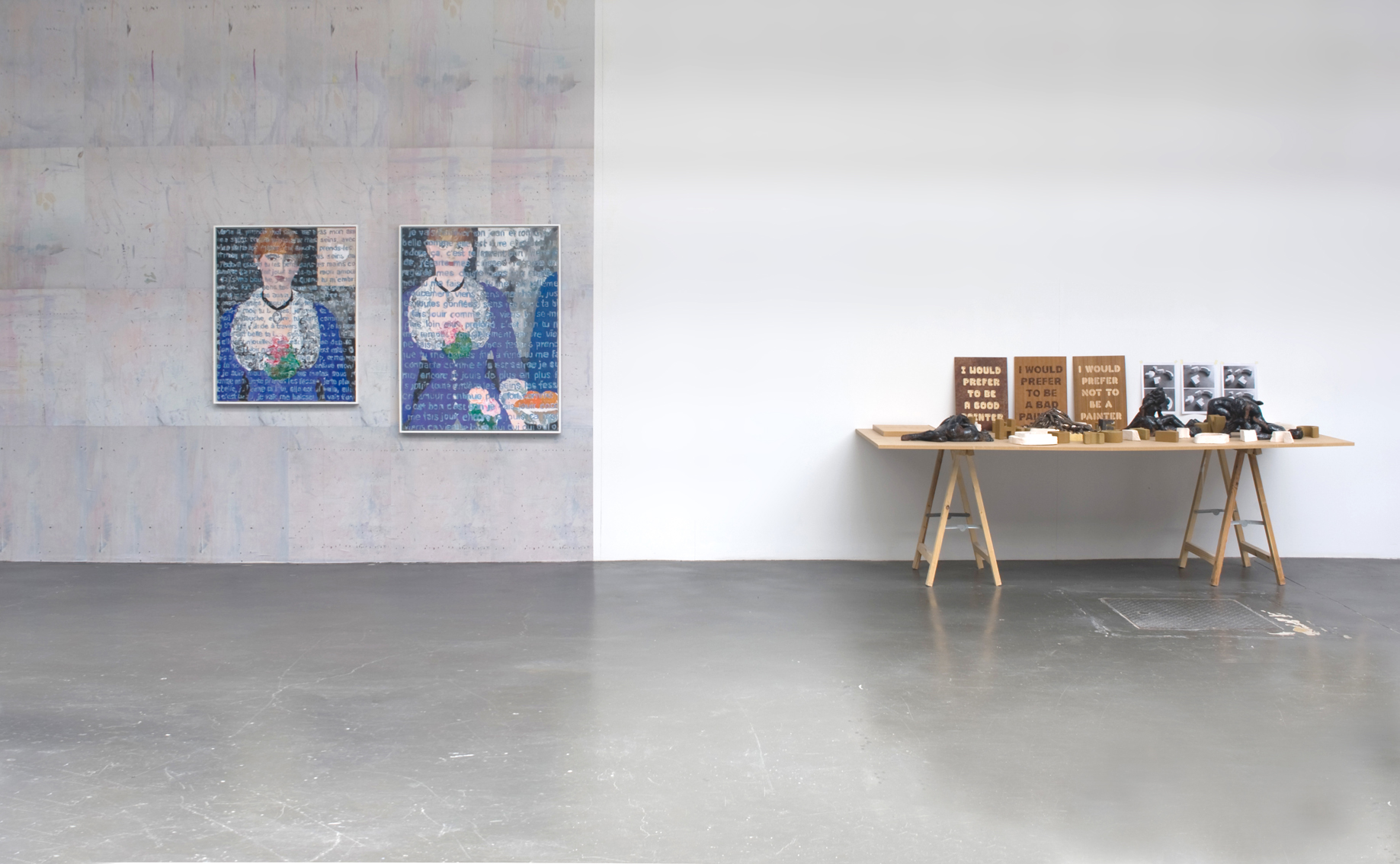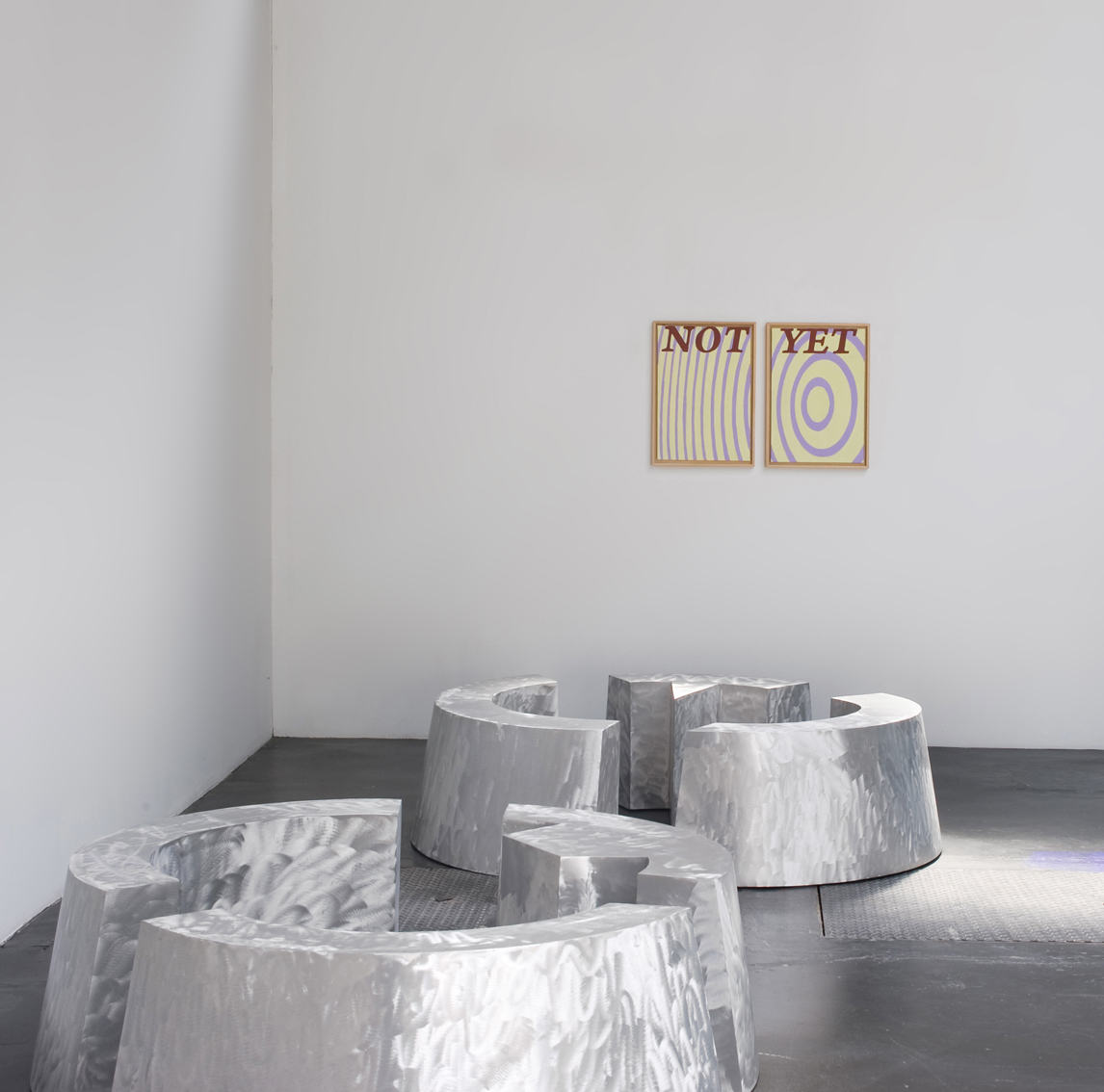Galerie Valérie Bach, Brussels
Studio As Performance - Curator Elena Sorokina
solo show

23.04.2015 › 25.07.2015
Curator Elena Sorokina
For her first solo exhibition in Brussels, Agnès Thurnauer will create a mise-en-scene of her studio, reexamining the role and function of this seminal space of art and its legacy in todays context.
As the space of fundamental artistic activities, the studio has assumed multiple identities throughout art history, mythologized as "workshop, alchemic laboratory, factory, sanctum, lounge, home, and social network" (Michelle Grabner). The auratic tradition of the modernist studio was left behind by the post-studio practice in the 1960s–1970s. The dematerialization of the studio was followed by one of the art object. Today, our experience of the studio has been through a "digital turn". Very often, "the studio in question is simply a laptop", which exists in a "network space and is linked to countless other studios."(Caitlin Jones) From space of seclusion it mutated to space of hyper-connection, the figure of "artist" transforming from a solitary tragic hero to contemporary omnipresent networker.
Exploring these diverse identities and histories of the studio, Thurnauer highlights a dimension which has received a little attention so far: studio as a performative space. Most importantly, she reflects on the studio as a space of the artist-model dichotomy, examining them as both performing and working bodies. Revisiting feminist readings of the author/model power relations in the studio, she analyzes it through the lens of performativity and its early entanglments with the painting.
An unconventional juxtaposition of two works featuring "an artist in the studio" mark the conceptual frame of the exhibition. On a poster, Suzanne Valadon (created in 1927) presents herself as a nude model who paints. Here, the studio is a space of ambiguity for a woman artist and model, space of work and performance. In Semiotics of the Kitchen (1975), Martha Rosler performs in her own kitchen, parodying the studio as a resolutely undomestic "home of genius" against the backdrop of her feminist reading of it. Both artists reinterpret the studio in their work, reflecting on the place of the feminine body in this canonic space of art.
In this exhibition, Thurnauer analyses the legacy of the feminin body as an active element of the studio. Since 1998, Thurnauer used her studios as a space for diverse performative gestures, recording them by the camera and subsequently translating them into painting. Her singular practice, which combines painting, performance, sculpture, collage, drawing, and writing is profoundly informed by her research of art history's canonic and parallel narratives, feminist thought, psychoanalysis, and gender studies. The key issues she addresses in her artistic research are related to the absense of the body in the modernist canon of the 20th century, reflecting on the crucial questions of why the body has been masked and banned in the modern art "at the point of not being "seen" in its globality before 1960th". (Amelia Jones) For Thurnauer, these investigations are related to the advent of the feminist performance and danse from the 1960th on, which have been greatly informing her work.






